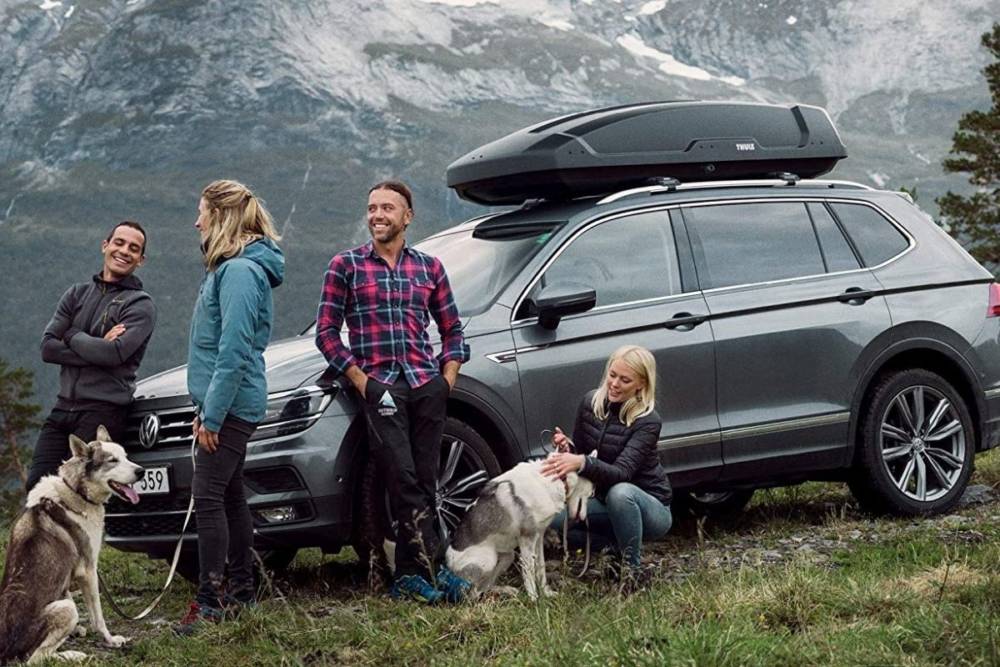When planning a road trip or outdoor adventure, having enough space to store all your gear is essential. A roof box can provide additional storage space on top of your vehicle, allowing you to bring more belongings and making your trip more comfortable. However, before you buy a roof box, it is important to consider various factors, such as the type and weight limit of the box, as well as installation and maintenance requirements. In this article, we will guide you through the process of installing a roof box on your vehicle, including the necessary steps and tips for safe and efficient installation.
Types of Roof Boxes and Recommended Uses
Roof boxes come in two main types: hard shell and soft shell. Hard shell roof boxes are typically made of durable materials such as fiberglass or ABS plastic, providing better protection for your belongings. They also have better aerodynamic design, which can reduce wind noise and increase fuel efficiency. On the other hand, soft shell roof boxes are made of fabric materials and are generally less expensive and easier to store when not in use. However, they may not be as durable and secure as hard shell boxes.
Before buying a roof box, you should also consider the weight limit and recommended uses of the box. Different roof box brands have different weight limits and specifications, so make sure to read the product description carefully before making a buying decision. Consider the size of your vehicle and the type of gear you will be carrying to determine the appropriate size and weight limit of the roof box.
Measuring for Fit and Mounting System
Once you have selected the type and size of the roof box, the next step is to measure your vehicle’s roof and ensure that the box will fit securely. Measure the length, width, and height of your roof and compare them to the dimensions of the roof box to ensure a proper fit. You should also check the mounting system of the roof box and make sure it is compatible with your vehicle’s roof rack or crossbars. Some roof boxes come with their own mounting system, while others require an additional purchase of mounting hardware.
Installation and Securing Belongings
Before installation, make sure to read the installation instructions provided by the manufacturer carefully. It is important to follow the instructions step by step to ensure a safe and secure installation. First, attach the mounting hardware to the roof box and then place the box on the roof of your vehicle. Align the mounting system of the box with the roof rack or crossbars and tighten the mounting hardware securely.
Once the roof box is installed, it is important to secure your belongings inside the box to prevent them from shifting during transit. Use packing tips such as placing heavier items on the bottom and distributing the weight evenly to ensure proper weight distribution and stability. You may also want to use accessories such as tie-down straps or cargo nets to secure your belongings further.
Loading and Unloading, Weight Distribution, and Noise Level
When loading and unloading your roof box, be careful not to exceed the weight limit and ensure that the weight is evenly distributed. Uneven weight distribution can cause the vehicle to sway or affect the handling of the vehicle, which can be dangerous. It is also important to consider the noise level of the roof box while driving. Hard shell boxes generally have better aerodynamic design and are quieter than soft shell boxes.
Legality and Restrictions, Weather Impact, and Maintenance
Before installing a roof box, it is important to check the legality and restrictions in your area. Some states and countries have specific laws regarding the use of roof boxes, such as the maximum height or weight limit. You should also consider the impact of weather conditions such as rain, snow, or wind on the roof box and your belongings. Make sure to check the weather forecast before your trip and take necessary precautions such as covering the box with a waterproof cover.
In terms of maintenance, it is important to clean the roof box regularly and remove any dirt or debris that may accumulate on the surface. You should also check the mounting hardware and the roof box itself for any signs of damage or wear and tear. If you notice any issues, it is recommended to repair or replace the roof box as needed to ensure safety and efficiency.
Benefits of a Roof Box
Roof boxes offer many benefits for outdoor enthusiasts, families with children and pets, and businesses. Some of the benefits include:
- Additional storage space for gear and belongings
- Easy and convenient access to gear during the trip
- Better fuel efficiency due to improved aerodynamics
- Increased safety by reducing clutter and distractions inside the vehicle
- Protection for belongings from weather and theft
- Versatility and flexibility for different types of trips and gear
Conclusion
Installing a roof box on your vehicle can provide additional storage space and make your trip more comfortable and convenient. However, it is important to consider various factors such as the type and weight limit of the box, as well as installation and maintenance requirements, to ensure a safe and efficient installation. By following the guidelines outlined in this article, you can enjoy the benefits of a roof box and make the most of your outdoor adventures.
FAQs
What is the weight limit for a roof box?
Different roof box brands have other weight limits, so check the product description before buying. The weight limit also depends on the size and type of the roof box and the capacity of your vehicle’s roof rack or crossbars.
Can I install a roof box on any type of vehicle?
Roof boxes can be installed on most vehicles with roof racks or crossbars. However, it is important to check the compatibility of the roof box and the mounting system with your vehicle’s roof rack or crossbars before buying.
How do I secure my belongings inside the roof box?
Use packing tips such as placing heavier items on the bottom and distributing the weight evenly to ensure proper weight distribution and stability. You may also want to use accessories such as tie-down straps or cargo nets to secure your belongings further.
Can a roof box affect the fuel efficiency of my vehicle?
Yes, a roof box can affect the fuel efficiency of your vehicle by creating additional wind resistance and drag. However, hard shell roof boxes have better aerodynamic design and can reduce wind noise and improve fuel efficiency compared to soft shell boxes.
How often should I clean and maintain my roof box?
It is recommended to clean the roof box regularly and remove any dirt or debris that may accumulate on the surface. Check the mounting hardware and the roof box itself for any signs of damage or wear and tear, and repair or replace as needed.





